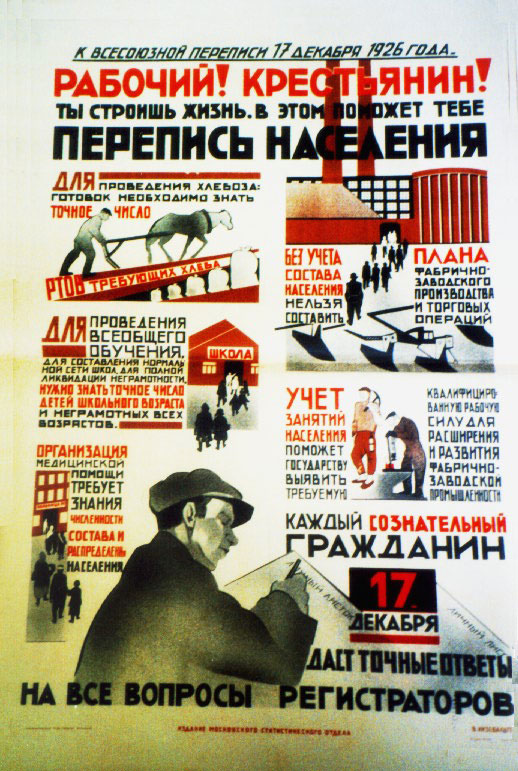|
Deportation Of Azerbaijanis From Armenia
Mass deportation of Azerbaijanis from Armenia took place several times throughout the 20th century, and have been described as acts of forced resettlement and ethnic cleansing. Prior to the October Revolution, Azerbaijanis had made up 43 percent of the population of Yerevan. The Tartar (i.e. Azerbaijani) population endured a process of forced migration from the territory of the First Republic of Armenia and later in the Armenian SSR several times during the 20th century. Under Stalin's policies, approximately 100,000 Azerbaijanis were deported from the Armenian SSR in 1948.Grenoble, Lenore ALanguage Policy in the Soviet Union.Springer: 2003, p.135 Prior to the Revolution, Azerbaijanis had made up 43 percent of the population of Erevan, but approximately 100,000 were deported from the Armenian SSR in 1948 (Dragadze 1990:166–7). Their houses were subsequently inhabited by Armenian repatriates who arrived in the Soviet Union from abroad. [...More Info...] [...Related Items...] OR: [Wikipedia] [Google] [Baidu] |
Forced Resettlement
Population transfer or resettlement is a type of mass migration, often imposed by state policy or international authority and most frequently on the basis of ethnicity or religion but also due to economic development. Banishment or exile is a similar process, but is forcibly applied to individuals and groups. Population transfer differs more than simply technically from individually motivated migration, but at times of war, the act of fleeing from danger or famine often blurs the differences. If a state can preserve the fiction that migrations are the result of innumerable "personal" decisions, the state may be able to claim that it is not to blame for the displacement. Often the affected population is transferred by force to a distant region, perhaps not suited to their way of life, causing them substantial harm. In addition, the process implies the loss of immovable property and substantial amounts of movable property when rushed. This transfer may be motivated by the more p ... [...More Info...] [...Related Items...] OR: [Wikipedia] [Google] [Baidu] |
Novobayazetsky Uyezd
The Nor Bayazet or Novobayazet ''uezd'' was a county (''uezd'') of the Erivan Governorate of the Caucasus Viceroyalty of the Russian Empire. The ''uezd'' bordered the Alexandropol uezd to the north, the Etchmiadzin and Erivan uezds to the west, the Sharur-Daralayaz uezd to the south, and the Kazakh, Elizavetpol, and Jevanshir ''uezds'' of the Elizavetpol Governorate to the east. Centered on Lake Sevan, the Nor Bayazet ''uezd'' included most of the contemporary province of Gegharkunik and northern parts of the Kotayk Province of Armenia. The administrative center of the ''uezd'' was the city Novobayazet (present-day Gavar) for which the district was eponymously named. In 1916, the district was over 90% rural and home to over 129,300 Armenians and 53,700 Muslims (including 3,000 Kurds). Resulting from the Ottoman invasion of the South Caucasus, in 1918–1920 the population of the district contracted significantly due to famine and large-scale ethnic cleansing. History The ... [...More Info...] [...Related Items...] OR: [Wikipedia] [Google] [Baidu] |
Council Of Ministers (Soviet Union)
The Council of Ministers of the Union of Soviet Socialist Republics ( rus, Совет министров СССР, r=Sovet Ministrov SSSR, p=sɐˈvʲet mʲɪˈnʲistrəf ɛsɛsɛˈsɛr; sometimes abbreviated to ''Sovmin'' or referred to as the ''Soviet of Ministers''), was the ''de jure'' government of the Union of Soviet Socialist Republics (USSR), comprising the main executive and administrative agency of the USSR from 1946 until 1991. During 1946 the Council of People's Commissars was reorganized as the Council of Ministers. Accordingly, the People's Commissariats were renamed as Ministries. The council issued declarations and instructions based on and in accordance with applicable laws, which had obligatory jurisdictional power in all republics of the Union. However, the most important decisions were made by joint declarations with the Central Committee of the Communist Party of Soviet Union (CPSU), which was ''de facto'' more powerful than the Council of Ministers. During 1 ... [...More Info...] [...Related Items...] OR: [Wikipedia] [Google] [Baidu] |
Fifth Column
A fifth column is any group of people who undermine a larger group or nation from within, usually in favor of an enemy group or another nation. According to Harris Mylonas and Scott Radnitz, "fifth columns" are “domestic actors who work to undermine the national interest, in cooperation with external rivals of the state." The activities of a fifth column can be overt or clandestine. Forces gathered in secret can mobilize openly to assist an external attack. This term is also extended to organised actions by military personnel. Clandestine fifth column activities can involve acts of sabotage, disinformation, espionage, and/or terrorism executed within defense lines by secret sympathizers with an external force. Origin The term "fifth column" originated in Spain (originally ''quinta columna'') during the early phase of the Spanish Civil War. It gained popularity in the Loyalist faction media in early October 1936 and immediately started to spread abroad. The exact origins of t ... [...More Info...] [...Related Items...] OR: [Wikipedia] [Google] [Baidu] |
Ardahan
Ardahan (, ka, არტაანი, tr, hy, Արդահան, translit=Ardahan Russian: Ардаган) is a city in northeastern Turkey, near the Georgian border. It is the capital of Ardahan Province. History Ancient and medieval Ardahan was historically located in the region of Gogarene (Gugark), which Strabo calls a part of the Armenia that was taken away from the Kingdom of Iberia. "Ardahan," Armenian Soviet Encyclopedia. Yerevan: Armenian Academy of Sciences, 1976, vol. 2, p. 7. In the Middle Ages Ardahan served as an important transit point for goods arriving from the Abbasid Caliphate and departing to the regions around the Black Sea. During the 8th to 10th centuries the region was in hands of the Bagrationi princes of Tao-Klarjeti under the name of Artaani, and later part of Kingdom of Georgia between 11th to 15th centuries. According to the Arab historian Yahya of Antioch, the Byzantines razed Ardahan and slaughtered its population in 1021. The Mongols took hold ... [...More Info...] [...Related Items...] OR: [Wikipedia] [Google] [Baidu] |
Kars
Kars (; ku, Qers; ) is a city in northeast Turkey and the capital of Kars Province. Its population is 73,836 in 2011. Kars was in the ancient region known as ''Chorzene'', (in Greek Χορζηνή) in classical historiography ( Strabo), part of Kingdom of Armenia (antiquity), in Ayrarat province, and later the capital of Bagratid Kingdom of Armenia in 929–961. Currently, the mayor of Kars is Türker Öksüz. The city had an Armenian ethnic majority until it was conquered by Turkish nationalist forces in late 1920. Etymology The city's name may be derived from the Armenian word հարս (''hars''), meaning "bride". Another hypothesis has it that the name derives from the Georgian word "the gate. History Medieval period Little is known of the early history of Kars beyond the fact that, during medieval times, it had its own dynasty of Armenian rulers and was the capital of a region known as Vanand. Medieval Armenian historians referred to the city by a variety of names, in ... [...More Info...] [...Related Items...] OR: [Wikipedia] [Google] [Baidu] |
Black Sea
The Black Sea is a marginal mediterranean sea of the Atlantic Ocean lying between Europe and Asia, east of the Balkans, south of the East European Plain, west of the Caucasus, and north of Anatolia. It is bounded by Bulgaria, Georgia, Romania, Russia, Turkey, and Ukraine. The Black Sea is supplied by major rivers, principally the Danube, Dnieper, and Don. Consequently, while six countries have a coastline on the sea, its drainage basin includes parts of 24 countries in Europe. The Black Sea covers (not including the Sea of Azov), has a maximum depth of , and a volume of . Most of its coasts ascend rapidly. These rises are the Pontic Mountains to the south, bar the southwest-facing peninsulas, the Caucasus Mountains to the east, and the Crimean Mountains to the mid-north. In the west, the coast is generally small floodplains below foothills such as the Strandzha; Cape Emine, a dwindling of the east end of the Balkan Mountains; and the Dobruja Plateau considerably farth ... [...More Info...] [...Related Items...] OR: [Wikipedia] [Google] [Baidu] |
Russia–Turkey Relations
Russia–Turkey relations (russian: Российско–турецкие отношения; tr, Rusya–Türkiye ilişkileri) are the bilateral relations between Russia and Turkey and their antecedent states. Relations between the two are rather cyclical. From the late 16th until the early 20th centuries, relations between the Ottoman and Russian empires were normally adverse and hostile and the two powers were engaged in numerous Russo-Turkish wars, comprising one of the longest wars in modern history. Russia attempted to extend its influence in the Balkans and gain control of the Bosphorus at the expense of the weakening Ottoman Empire. As a result, the diplomatic history between the two powers was extremely bitter and acrimonious up to World War I. However, in the early 1920s, as a result of the Bolshevik Russian government's assistance to Turkish revolutionaries during the Turkish War of Independence, the governments' relations warmed. Relations again turned sour at the en ... [...More Info...] [...Related Items...] OR: [Wikipedia] [Google] [Baidu] |
Soviet Census (1959)
The Soviet Census conducted in January 1959 was the first post-World War II census held in the Soviet Union. Background For a decade after World War II, there were no new population statistics released by the Soviet Union, and a proposal for a new Soviet census for 1949 was rejected by Soviet leader Joseph Stalin. During this time, most Western experts estimated that the population of the Soviet Union was between 215 and 220 million people, but in June 1956 (after Stalin's death), the Soviet government announced that the country's population at that point was only 200,200,000. Results The new census announced the Soviet Union's population to be 208,826,650, an increase of almost forty million from the results of the last (disputed) census from 1939. A majority of this population increase was due to the Soviet territorial expansion of the 1939–1945 time period, rather than due to natural population growth. The deficit of men to women in the total Soviet population massi ... [...More Info...] [...Related Items...] OR: [Wikipedia] [Google] [Baidu] |
First All-Union Census Of The Soviet Union
The 1926 Soviet Census took place in December 1926. It was an important tool in the state-building of the USSR, provided the government with important ethnographic information, and helped in the transformation from Imperial Russian society to Soviet society. The decisions made by ethnographers in determining the ethnicity (''narodnost'') of individuals, whether in the Asiatic or European parts of the former Russian Empire, through the drawing up of the "List of Ethnicities of the USSR", and how borders were drawn in mixed areas had a significant influence on Soviet policies. Ethnographers, statisticians, and linguists were drawing up questionnaires and list of ethnicities for the census. However, they also had the more ambitious goal of deliberately transforming their identities according to the principles of Marxism–Leninism. As Anastas Mikoyan put it, the Soviet Union was: "creating and organising new nations". Previous censuses The First All-Union Census of the Soviet Union f ... [...More Info...] [...Related Items...] OR: [Wikipedia] [Google] [Baidu] |
Zangezur Uezd
The Zangezur uezd was a county (''uezd'') of the Elizavetpol Governorate of the Russian Empire with its administrative center in Gerusy (present-day Goris) from 1868 until its formal abolition and partition between the Soviet republics of Armenia and Azerbaijan in 1921. The area of the Zangezur uezd corresponded to most of the contemporary Syunik province of Armenia, and Lachin, Gubadly, Zangilan, and Shusha districts of Azerbaijan. Geography Almost the entirety of the area is mountainous with many gorges and valleys of the Lesser Caucasus mountain range. The altitude ranges from 10,000–12,855 feet at Mount Kaputjugh, a mountain range which forms the natural boundary between the governorates of Elizavetpol and Erivan. The rivers of the Zangezur uezd are located within the Aras River basin—The Bargushad, Chaundurchay, , and Megrichay rivers played important roles in the irrigation system of the ''uezd''. History Historically, the Zangezur region was part of the Syunik pro ... [...More Info...] [...Related Items...] OR: [Wikipedia] [Google] [Baidu] |






_01.jpg)

